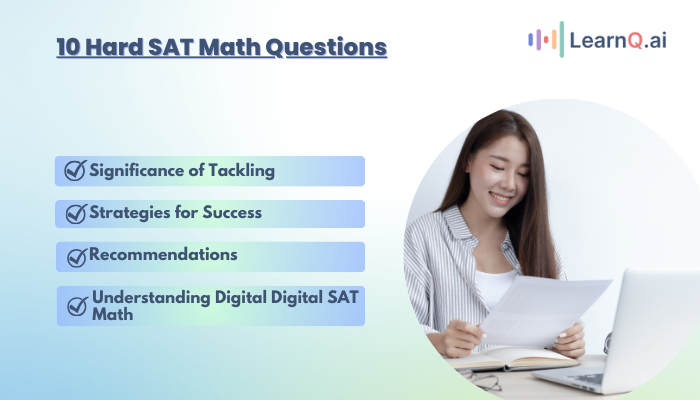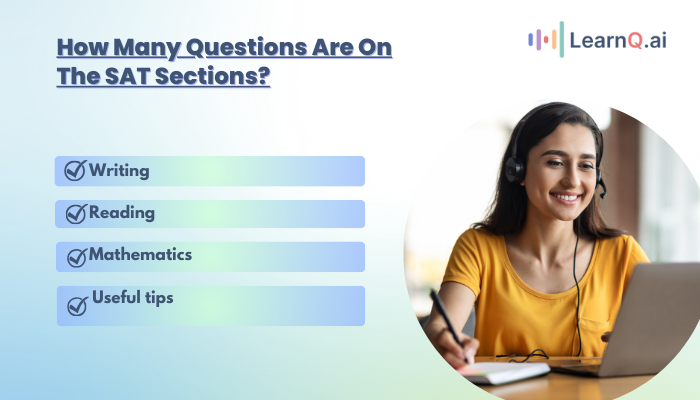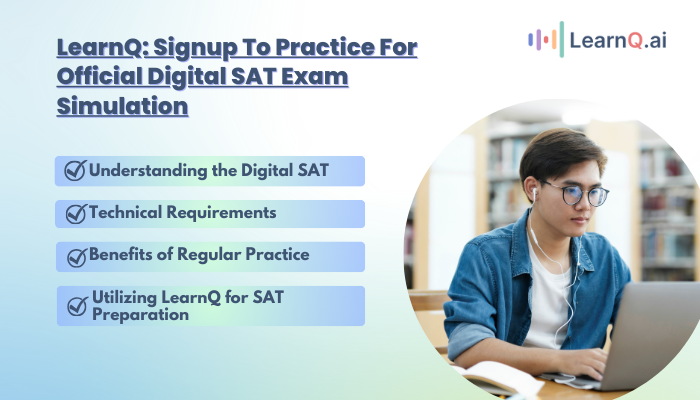The SAT- a test designed to assess your academic prowess and college readiness.
But what happens when the test itself malfunctions?
That’s exactly what transpired in 1982, in a now-infamous incident involving a seemingly straightforward math question that descended into a full-blown mathematical paradox.
Read further, to know what happened.
A recount of the 1982 SAT math question incident where no correct answer was provided
One fine day in an SAT exam hall, when students had their pencils sharpened and nerves humming. They breezed through the reading section confidently.
Then, they reach the math section and encounter a question that makes them furrow their brow.
It involved circles, rotations, and some calculations.
They plugged in numbers and tried different approaches, but nothing seemed to click.
This wasn’t the case for just one student – thousands of students across the country were grappling with the same bewilderment.
The culprit? A seemingly innocuous question about one circle revolving around another. The problem, however, resided in the underlying assumption.
The test makers intended for the question to involve a single complete revolution. But here’s the twist: due to the geometry involved, the actual scenario resulted in one extra revolution.
This little mathematical quirk, known as the coin rotation paradox, threw everyone off.
The answer choices provided weren’t even close to the true solution. The result? Mass confusion.
Students who felt confident about their math skills were left questioning their abilities.
The widespread confusion among test-takers and the eventual rescore of 300,000 exams
News of the problematic question spread like wildfire, and the College Board, the organization responsible for the SAT, found itself in a sticky situation.
In an unprecedented move, the College Board acknowledged the error. They had to rescale 300,000 exams, a logistical nightmare.
This incident highlighted the importance of meticulous test design and served as a cautionary tale for future test creators.
It also underscored the value of critical thinking – sometimes, even the seemingly straightforward questions can harbor hidden complexities.
So, the next time you encounter a puzzling problem, remember the 1982 SAT fiasco – a reminder that even the most standardized tests can have their flaws, and sometimes, a little healthy skepticism can go a long way.
The Infamous 1982 SAT Math Question
The 1982 SATs hold a unique place in testing history, not for its difficulty, but for a question that, well, stumped everyone.
It wasn’t a particularly complex problem on the surface – it involved circles, a geometry staple. But beneath the seemingly innocent facade lurked a mathematical gremlin that threw a wrench into everyone’s calculations.
Description of the math problem involving two circles with disparate radii
The question presented two circles, let’s call them Circle A and Circle B. Circle B, the larger of the two, had a radius three times that of Circle A.
The twist? Circle A had to roll around the circumference of circle B.
The question: how many complete revolutions would circle A make to return to its starting point?
Here’s where the misconception arose.
Intuitively, many test-takers (and perhaps even some graders) assumed a simple ratio play. Since circle B’s circumference was three times that of circle A, circle A would need to complete three revolutions of its circumference to travel the full distance around B.
Seems logical, right? Wrong.
The oversight lies in neglecting the unique path circle A takes. It wasn’t simply rolling on a flat surface; it was constantly rotating around its center as it traced the path along circle B.
This additional rotation, often referred to as the “rogue rotation,” is what threw everyone off.
Also Read, Practice Digital SAT Math: Geometry Questions And Answers Worksheet
LearnQ.ai is Powered by VEGA AI—Is your Institute Next?
Give students a Duolingo-style test-prep platform with Shopify-level customization for tutors and institutes.
The Coin Rotation Paradox Unveiled
The 1982 SAT question wasn’t just a random mathematical hiccup; it exposed a fascinating concept known as the coin rotation paradox.
Explanation of the paradox using the example of rolling one quarter around another
Imagine you have two coins, one significantly larger than the other, like a quarter and a dinner plate. If you roll the quarter around the rim of the dinner plate, how many times would it spin on its axis to return to its starting point?
Here’s the surprising answer: the smaller coin (the quarter) would rotate one more time than its circumference. Intuition might tell you it would spin exactly once to cover the same distance around its edge as it travels along the larger coin’s rim. But that’s where the paradox lies.
The path the center of the smaller coin takes isn’t a simple circle; it’s a slightly squashed shape called a cardioid. This curved path adds extra distance for the smaller coin to cover, essentially forcing it to rotate an extra time to reach its starting position.
How the paradox applies to the SAT question, leading to an unexpected extra rotation
Now, let’s bring this back to the SAT question.
Remember, circle A was much smaller than circle B. As circle A rolled around B, its center wasn’t following a perfect circle – it too was tracing a cardioid path. This extra distance due to the curved path resulted in that unexpected extra revolution that the test makers hadn’t accounted for.
The coin rotation paradox, while seemingly a mind-bender, demonstrates a beautiful interplay between geometry and motion.
It’s a reminder that sometimes, the most intuitive solutions might not be the correct ones, and a healthy dose of critical thinking can be the key to unlocking these hidden complexities.
Application to Celestial Mechanics
The coin rotation paradox might seem like a quirk confined to the realm of earthly objects, but its principles surprisingly have applications in celestial mechanics as well.
Let’s see how-
Drawing similarity between the coin rotation paradox and celestial bodies’ movement
The grand ballet of planets, moons, and stars often involves rotations and revolutions that can echo the unexpected twists of the coin scenario.
Here’s the connection: just like the smaller coin experiences an “extra” rotation due to its path around the larger one, celestial bodies can exhibit similar behaviors.
Specific example of the moon’s rotation and its tidal locking with Earth
Take the moon, Earth’s constant companion. The moon, like the smaller coin, is tidally locked with Earth. This means the same side of the moon always faces Earth.
Now, here’s the twist. While the moon appears to rotate on its axis once every 27.3 days (the time it takes to complete one revolution around Earth), it completes slightly more than one full rotation during that period.
Image Source: Medium
Sound familiar?
This “extra” rotation, akin to the coin’s unexpected spin, arises because the moon’s center doesn’t follow a perfectly circular path around Earth. Similar to the cardioid path traced by the smaller coin, the moon’s path bulges slightly due to Earth’s gravitational pull. This bulge forces the moon to rotate a touch more than once on its axis to return to the same orientation relative to Earth.
The coin rotation paradox, therefore, serves as a stepping stone to understanding some of the fascinating orbital mechanics that govern the movements of celestial bodies.
So, the next time you gaze at the moon, remember – it might be putting on a little extra spin, a celestial echo of the coin rotation paradox.
Enhance your Digital SAT study routine with AI-driven insights and personalized practice tests.
The Right Solution Explanation
Here’s a detailed breakdown of why the question stumped so many students and what the correct answer should have been.
The Problem Setup
The question told us that the larger circle’s radius is three times that of the smaller circle. Consequently, the circumference of the larger circle is three times that of the smaller circle. The question led students to reason that the smaller circle would “unwrap” itself exactly three times to encase the larger one, making “3” the intended multiple-choice answer on the SAT.
The Paradox of the Extra Rotation
In reality, circle A makes four rotations on its trip—one more rotation than intuition suggests. This extra rotation was so far from the test writers’ awareness that four wasn’t offered as an option among the possible answers. As a result, even the most astute students were forced to submit a wrong response.
Why is There an Extra Rotation?
The error in reasoning comes from misunderstanding the sources of rotation. Rolling a quarter along a three-inch straight-line path involves only one rotation. Similarly, a small circle rolling in a straight line with a length that is three times its diameter would rotate three times. However, the circular shape of the path adds a rotation of its own.
To see why, imagine rolling a quarter around the perimeter of a tiny poppy seed. Even though the length around the seed is negligible, the quarter will rotate once.
Thus, there are two sources of rotation:
- Path Length Rotation: The longer the path, the more rotations it involves.
- Revolution Around an Object: This contributes one rotation regardless of the object’s size.
The Right Solution
Understanding this, the correct answer is that the smaller circle rotates four times as it rolls around the larger one. The circular path adds an extra rotation to the three rotations from the path length. The SAT question overlooked this crucial aspect, leading to the inclusion of incorrect answer choices.
What do we learn?
This analysis highlights the importance of considering all factors in rotational dynamics, both in celestial mechanics and seemingly simple SAT questions. The coin rotation paradox serves as a stepping stone to understanding complex orbital mechanics. Next time you gaze at the moon, remember it might be putting on a little extra spin, echoing the fascinating quirks of rotational physics.
This SAT question serves as a reminder to always question our assumptions and look deeper into the mechanics behind seemingly simple problems. It’s a lesson in the importance of thorough understanding over intuitive reasoning.

The Response from the College Board
The 1982 SAT debacle wasn’t just a mathematical hiccup; it was a test of the College Board’s mettle.
How three students challenged the question, leading to its nullification
While the flawed question threw everyone for a loop, the spotlight soon shifted to how the organization would handle the situation.
Thankfully, credit goes to a handful of astute test-takers. Three students, likely with a healthy dose of skepticism and a keen eye for detail, noticed the discrepancy in the question.
They recognized that the answer choices didn’t account for the extra rotation caused by the coin rotation paradox. These students brought the issue to the College Board’s attention, effectively throwing a wrench into the standardized testing machine.
Faced with this challenge, the College Board had a critical decision to make. Ignoring the issue wasn’t an option – the students’ concerns were valid.
In an unprecedented move, the College Board acknowledged the error and took the bold step of nullifying the entire question. This meant rescoring a whopping 300,000 exams, a logistical nightmare.
The impact of this move went beyond just minor score adjustments for some students. It highlighted the importance of test validity and reliability. Standardized tests like the SAT are supposed to be a fair and accurate measure of a student’s abilities. The 1982 incident served as a stark reminder that even the most meticulously designed tests can have flaws.
The College Board’s response, while causing some administrative headaches, ultimately showed their commitment to test integrity. It also underscored the value of critical thinking – sometimes, students themselves can be the best watchdogs for ensuring the fairness of these high-stakes exams.
So, the next time you take a standardized test, remember the 1982 SAT story – a reminder that even the most seemingly straightforward questions can harbor complexities, and a questioning mind can be a powerful tool.
Also Read, SAT Math Tips And Tricks To Boost Your Score
LearnQ.ai is powered by VEGA AI—Is your institute next?
Offer students a Duolingo-style test-prep platform with Shopify-level customization for tutors and institutes.






Conclusion
The story of the 1982 SAT question is a reminder that even the most seemingly straightforward concepts can harbor hidden complexities.
While the SAT landscape may be changing, the need for strong preparation remains. LearnQ.ai steps in as your ultimate digital companion for conquering the digital SAT.
LearnQ.ai utilizes cutting-edge AI to create a personalized learning experience that caters to your specific strengths and weaknesses.
You get:
- Interactive practice questions that keep you engaged and motivated.
- Real-time feedback that helps you identify areas for improvement.
- Adaptive difficulty levels that constantly challenge you to grow.
Don’t let the SAT become another mathematical paradox.
With LearnQ.ai by your side, you’ll be equipped to navigate the new digital format with confidence and unlock your full potential.
Head over to LearnQ.ai and take control of your SAT prep journey today!











